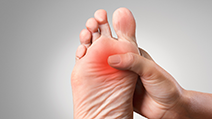Everybody knows by now that calcium is one of the most important building blocks of our bones and teeth. Nonetheless, our bones are made up of many more components other than calcium. A very important one is magnesium and often people have a deficiency of it. In order that calcium can reach the bones in the first place, vitamin D is indispensable. Both vital substances are responsible for calcium's absorption with the food and its incorporation into our bones – if they are not available, our locomotor system cannot function well. For optimal calcium supply as well as healthy bones and joints, calcium should always be purposefully taken combined with magnesium and vitamin D. Thus, a diet that includes foods containing vitamin D and magnesium helps to counteract deficiency of these important nutrients. Also beneficial is taking vitamin D-rich medications with the respective indication of preventing or alleviating osteoporosis.



